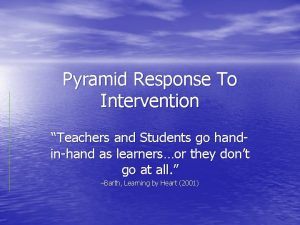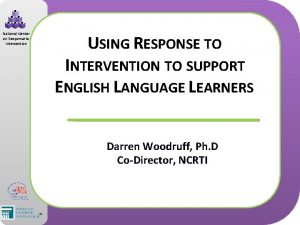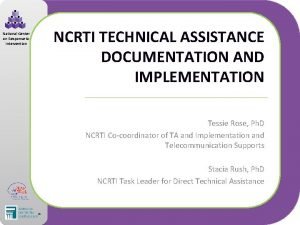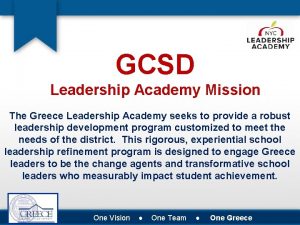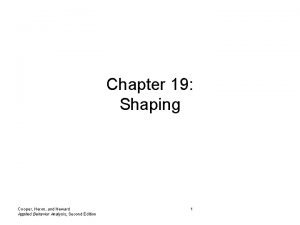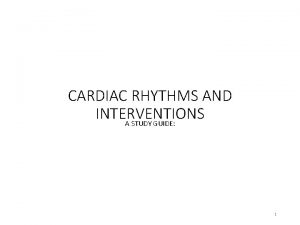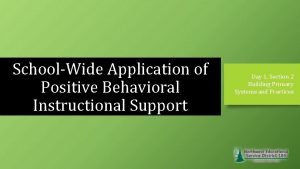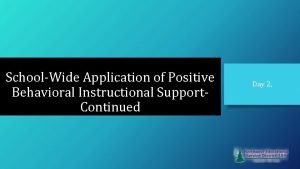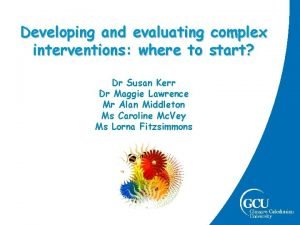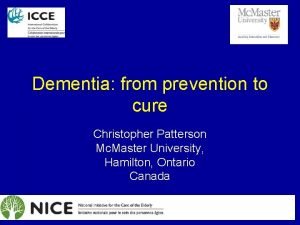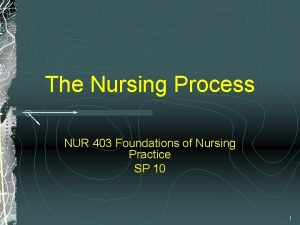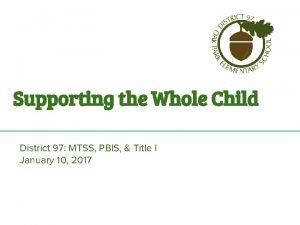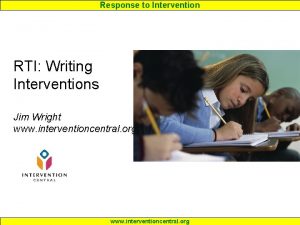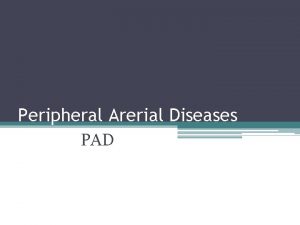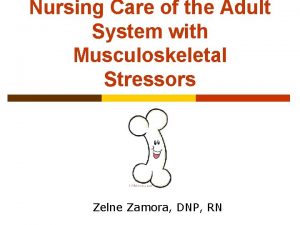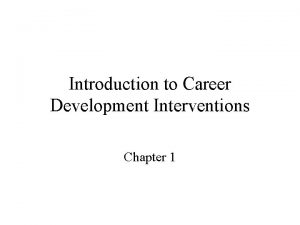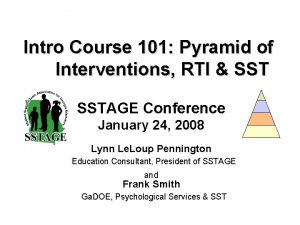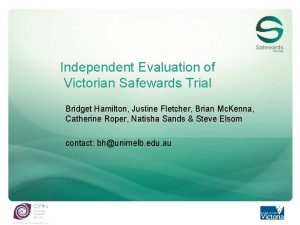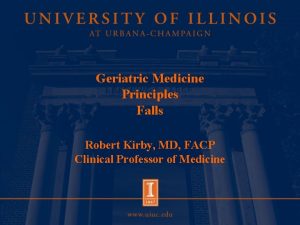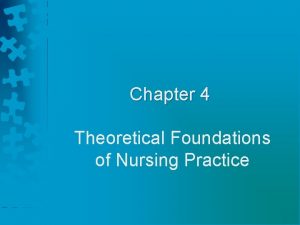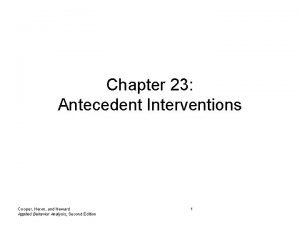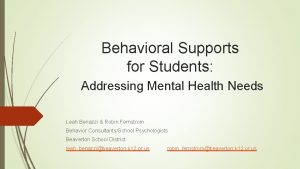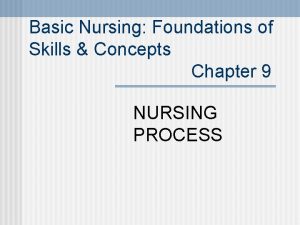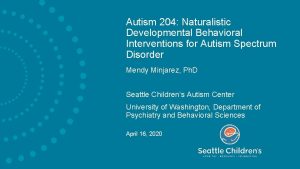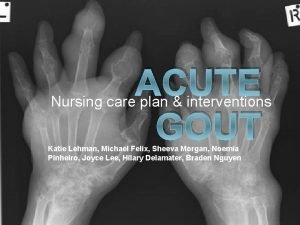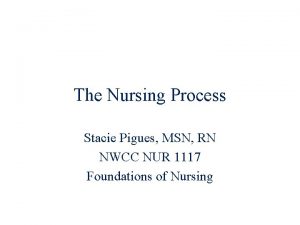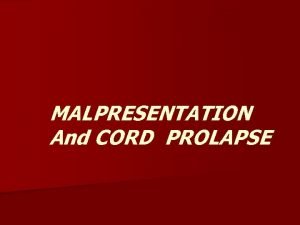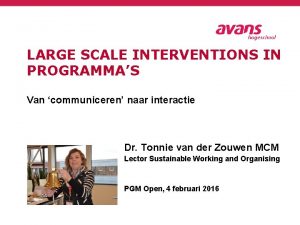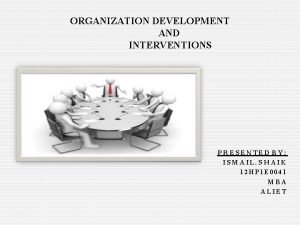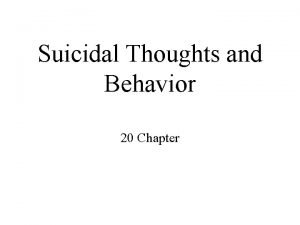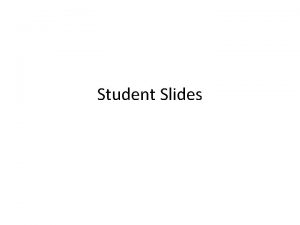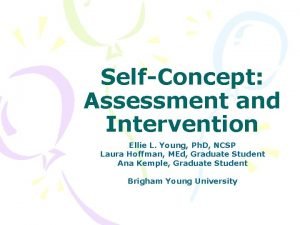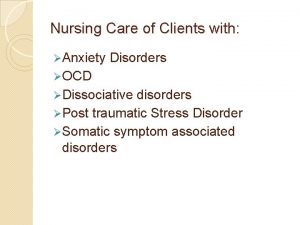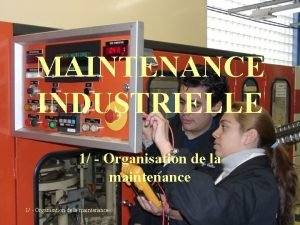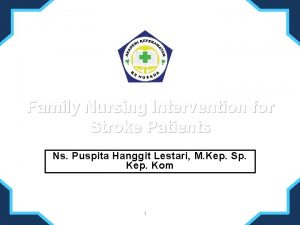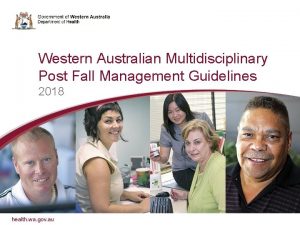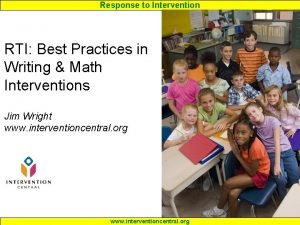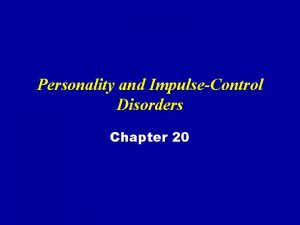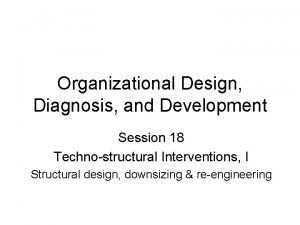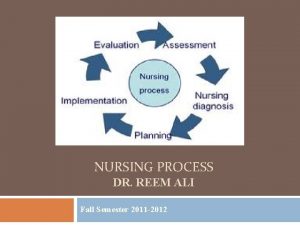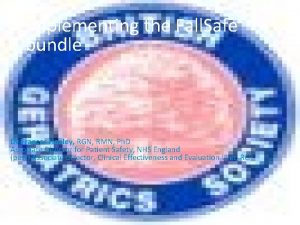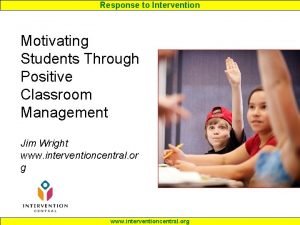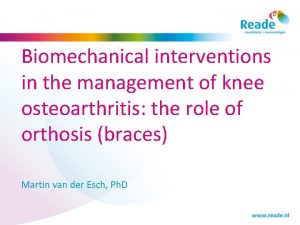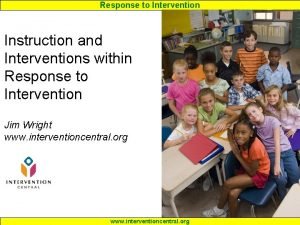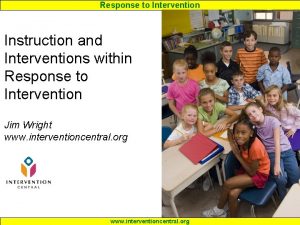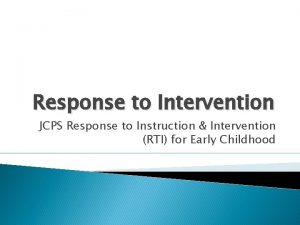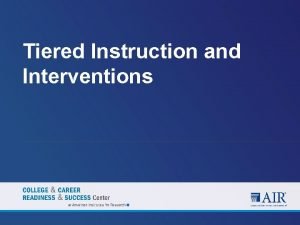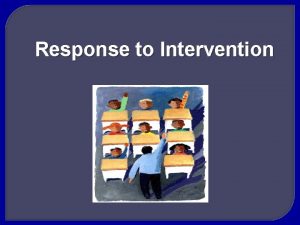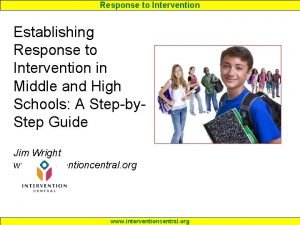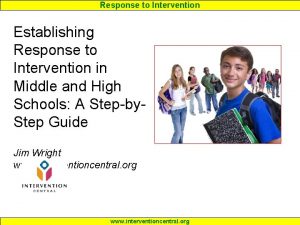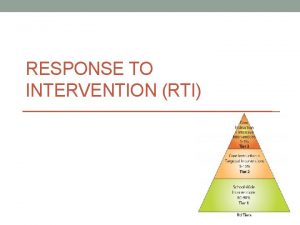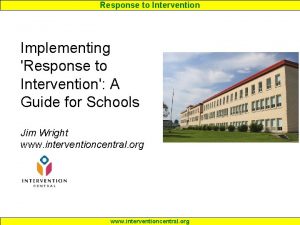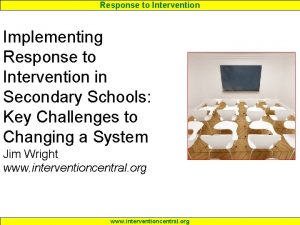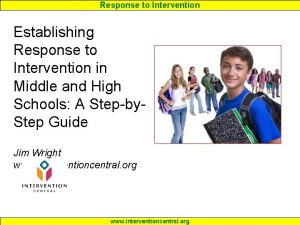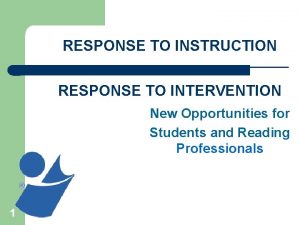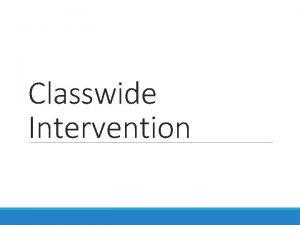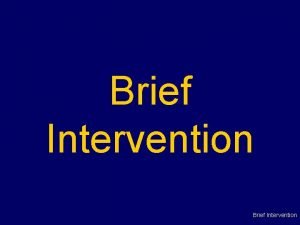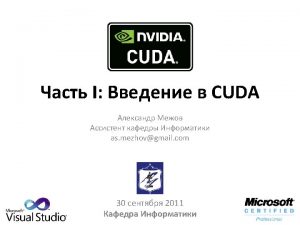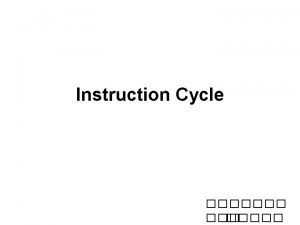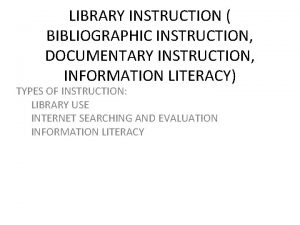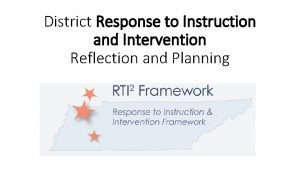Response to Intervention Instruction and Interventions within Response
























































































- Slides: 88

Response to Intervention Instruction and Interventions within Response to Intervention Jim Wright www. interventioncentral. org

Response to Intervention RTI ‘Pyramid of Interventions’ Tier 3 Tier 2 Tier 1 Tier 3: Intensive interventions. Students who are ‘non-responders’ to Tiers 1 & 2 are provided with a customized intervention Tier 2 Individualized plan. interventions. Subset of students receive ‘ interventions targeting specific needs. Tier 1: Universal interventions. Available to all students in a classroom or school. Can consist of whole-group or www. interventioncentral. org 2

Response to Intervention Apply the ‘ 80 -15 -5’ Rule to Determine if the Focus of the Intervention Should Be the Core Curriculum, Subgroups of Underperforming Learners, or Individual Struggling Students (T. Christ, 2008) – If less than 80% of students are successfully meeting academic or behavioral goals, the intervention focus is on the core curriculum and general student population. – If no more than 15% of students are not successful in meeting academic or behavioral goals, the intervention focus is on small-group ‘treatments’ or interventions. – If no more than 5% of students are not successful in meeting academic or behavioral goals, the intervention focus is on the individual student. Source: Christ, T. (2008). Best practices in problem analysis. In A. Thomas & J. Grimes (Eds. ), Best practices in school psychology V (pp. 159 -176). www. interventioncentral. org 3

Response to Intervention Research & Development: A Work in Progress www. interventioncentral. org

Response to Intervention Tier 1: What Are the Recommended Elements of ‘Core Curriculum’? : More Research Needed “In essence, we now have a good beginning on the evaluation of Tier 2 and 3 interventions, but no idea about what it will take to get the core curriculum to work at Tier 1. A complicating issue with this potential line of research is that many schools use multiple materials as their core program. ” p. 640 Source: Kovaleski, J. F. (2007). Response to intervention: Considerations for research and systems change. School Psychology Review, 36, 638 -646. www. interventioncentral. org 5

Response to Intervention Limitations of Intervention Research… “…the list of evidence-based interventions is quite small relative to the need [of RTI]…. Thus, limited dissemination of interventions is likely to be a practical problem as individuals move forward in the application of RTI models in applied settings. ” p. 33 Source: Kratochwill, T. R. , Clements, M. A. , & Kalymon, K. M. (2007). Response to intervention: Conceptual and methodological issues in implementation. In Jimerson, S. R. , Burns, M. K. , & Van. Der. Heyden, A. M. (Eds. ), Handbook of response to intervention: The science and practice of assessment and intervention. New York: Springer. www. interventioncentral. org 6

Response to Intervention Schools Need to Review Tier 1 (Classroom) Interventions to Ensure That They Are Supported By Research There is a lack of agreement about what is meant by ‘scientifically validated’ classroom (Tier I) interventions. Districts should establish a ‘vetting’ process—criteria for judging whether a particular instructional or intervention approach should be considered empirically based. Source: Fuchs, D. , & Deshler, D. D. (2007). What we need to know about responsiveness to intervention (and shouldn’t be afraid to ask). . Learning Disabilities Research & Practice, 22(2), 129– 136. www. interventioncentral. org 7

Response to Intervention RTI & Intervention: Key Concepts www. interventioncentral. org

Response to Intervention Essential Elements of Any Academic or Behavioral Intervention (‘Treatment’) Strategy: • Method of delivery (‘Who or what delivers the treatment? ’) Examples include teachers, paraprofessionals, parents, volunteers, computers. • Treatment component (‘What makes the intervention effective? ’) Examples include activation of prior knowledge to help the student to make meaningful connections between ‘known’ and new material; guide practice (e. g. , Paired Reading) to increase reading fluency; www. interventioncentral. org periodic review of material to aid 9

Response to Intervention Core Instruction, Interventions, Accommodations & Modifications: Sorting Them Out • Core Instruction. Those instructional strategies that are used routinely with all students in a general-education setting are considered ‘core instruction’. Highquality instruction is essential and forms the foundation of RTI academic support. NOTE: While it is important to verify that good core instructional practices are in place for a struggling student, those routine practices do not ‘count’ as individual student interventions. www. interventioncentral. org 10

Response to Intervention Core Instruction, Interventions, Accommodations & Modifications: Sorting Them Out • Intervention. An academic intervention is a strategy used to teach a new skill, build fluency in a skill, or encourage a child to apply an existing skill to new situations or settings. An intervention can be thought of as “a set of actions that, when taken, have demonstrated ability to change a fixed educational trajectory” (Methe & Riley-Tillman, 2008; p. 37). www. interventioncentral. org 11

Response to Intervention Core Instruction, Interventions, Accommodations & Modifications: Sorting Them Out • Accommodation. An accommodation is intended to help the student to fully access and participate in the general-education curriculum without changing the instructional content and without reducing the student’s rate of learning (Skinner, Pappas & Davis, 2005). An accommodation is intended to remove barriers to learning while still expecting that students will master the same instructional content as their typical peers. – Accommodation example 1: Students are allowed to supplement silent reading of a novel by listening to the book on tape. – Accommodation example 2: For unmotivated students, the instructor breaks larger assignments into smaller ‘chunks’ and providing students with www. interventioncentral. org 12

Response to Intervention Core Instruction, Interventions, Accommodations & Modifications: Sorting Them Out • Modification. A modification changes the expectations of what a student is expected to know or do—typically by lowering the academic standards against which the student is to be evaluated. Examples of modifications: – Giving a student five math computation problems for practice instead of the 20 problems assigned to the rest of the class – Letting the student consult course notes during a test when peers are not permitted to do so www. interventioncentral. org – Allowing a student to select a much easier book for a 13

Response to Intervention Team Activity: What Are Challenging Issues in Your School Around the Topic of Academic Interventions? … At your tables: • Discuss the task of promoting the use of ‘evidence-based’ math interventions in your school. • What are enabling factors that should help you to promote the routine use of such interventions. • What are challenges or areas needing improvement to allow you to promote use of those interventions? www. interventioncentral. org 14

Response to Intervention ‘Intervention Footprint’: 7 -Step Lifecycle of an Intervention Plan… 1. Information about the student’s academic or behavioral concerns is collected. 2. The intervention plan is developed to match student presenting concerns. 3. Preparations are made to implement the plan. 4. The plan begins. 5. The integrity of the plan’s implementation is measured. 6. Formative data is collected to evaluate the plan’s effectiveness. www. interventioncentral. org 15

Response to Intervention Big Ideas: The Four Stages of Learning Can Be Summed Up in the ‘Instructional Hierarchy’ pp. 2 -3 (Haring et al. , 1978) Student learning can be thought of as a multi-stage process. The universal stages of learning include: • Acquisition: The student is just acquiring the skill. • Fluency: The student can perform the skill but must make that skill ‘automatic’. • Generalization: The student must perform the skill across situations or settings. • Adaptation: The student confronts novel task demands that require that the student adapt a current skill to meet new requirements. Source: Haring, N. G. , Lovitt, T. C. , Eaton, M. D. , & Hansen, C. L. (1978). The fourth R: Research in the classroom. Columbus, OH: Charles E. Merrill Publishing Co. www. interventioncentral. org 16

Response to Intervention Increasing the Intensity of an Intervention: Key Dimensions Interventions can move up the RTI Tiers through being intensified across several dimensions, including: • • • Type of intervention strategy or materials used Student-teacher ratio Length of intervention sessions Frequency of intervention sessions Duration of the intervention period (e. g. , extending an intervention from 5 weeks to 10 weeks) • Motivation strategies Source: Burns, M. K. , & Gibbons, K. A. (2008). Implementing response-to-intervention in elementary and secondary schools. Routledge: New York. Kratochwill, T. R. , Clements, M. A. , & Kalymon, K. M. (2007). Response to intervention: Conceptual and methodological issues in implementation. In Jimerson, S. R. , Burns, M. K. , & Van. Der. Heyden, A. M. (Eds. ), Handbook of response to intervention: The science and practice of assessment and intervention. New York: Springer. www. interventioncentral. org 17

Response to Intervention RTI Interventions: What If There is No Commercial Intervention Package or Program Available? “Although commercially prepared programs and the subsequent manuals and materials are inviting, they are not necessary. … A recent review of research suggests that interventions are research based and likely to be successful, if they are correctly targeted and provide explicit instruction in the skill, an appropriate level of challenge, sufficient opportunities to respond to and practice the skill, and immediate feedback on performance…Thus, these [elements] could be used which to judge potentialin tier 2 Source: Burns, as M. K. , criteria & Gibbons, K. with A. (2008). Implementing response-to-intervention elementary and secondary schools. Routledge: New York. interventions. ” p. 88 www. interventioncentral. org 18

Response to Intervention Research-Based Elements of Effective Academic Interventions • ‘Correctly targeted’: The intervention is appropriately matched to the student’s academic or behavioral needs. • ‘Explicit instruction’: Student skills have been broken down “into manageable and deliberately sequenced steps and providing overt strategies for students to learn and practice new skills” p. 1153 • ‘Appropriate level of challenge’: The student experiences adequate success with the instructional task. • ‘High opportunity to respond’: The student actively responds at a rate frequent enough to promote Source: effective Burns, M. K. , learning. Van. Der. Heyden, A. M. , & Boice, C. H. (2008). Best practices in intensive academic interventions. In A. Thomas & J. Grimes (Eds. ), Best practices in school psychology V (pp. 1151 -1162). Bethesda, MD: National Association of School prompt Psychologists. • ‘Feedback’: The student receives www. interventioncentral. org 19

Response to Interventions: Potential ‘Fatal Flaws’ Any intervention must include 4 essential elements. The absence of any one of the elements would be considered a ‘fatal flaw’ (Witt, Van. Der. Heyden & Gilbertson, 2004) that blocks the school from drawing meaningful conclusions from the student’s response to the intervention: 1. Clearly defined problem. The student’s target concern is stated in specific, observable, measureable terms. This ‘problem identification statement’ is the most important step of the problem-solving model (Bergan, 1995), as a clearly defined problem allows the teacher or RTI Team to select a wellmatched intervention to address it. 2. Baseline data. The teacher or RTI Team measures the student’s academic skills in the target concern (e. g. , reading fluency, math computation) prior to beginning the intervention. Baseline data becomes the point of comparison throughout the intervention to help the school to determine whether that intervention is effective. 3. Performance goal. The teacher or RTI Team sets a specific, data-based goal for student improvement during the intervention and a checkpoint date by which the goal should be attained. 4. Progress-monitoring plan. The teacher or RTI Team collects student data Source: Witt, to J. C. , Van. Der. Heyden, A. M. , &the Gilbertson, D. (2004). Troubleshooting regularly determine whether student is on-track to reachbehavioral the interventions. A systematic performance goal. process for finding and eliminating problems. School Psychology Review, 33, 363 -383. www. interventioncentral. org 20

Response to Intervention RTI: Best Practices in Mathematics Interventions Jim Wright www. interventioncentral. org

Response to Intervention www. interventioncentral. org National Mathematics Advisory Panel Report 13 March 2008 22

Response to Intervention Math Advisory Panel Report at: http: //www. ed. gov/mathpanel www. interventioncentral. org 23

Response to Intervention 2008 National Math Advisory Panel Report: Recommendations • “The areas to be studied in mathematics from pre-kindergarten through eighth grade should be streamlined and a well-defined set of the most important topics should be emphasized in the early grades. Any approach that revisits topics year after year without bringing them to closure should be avoided. ” • “Proficiency with whole numbers, fractions, and certain aspects of geometry and measurement are the foundations for algebra. Of these, knowledge of fractions is the most important foundational skill not developed among American students. ” • “Conceptual understanding, computational and procedural fluency, and problem solving skills are equally important and mutually reinforce each other. Debates regarding the relative importance of each of these components of mathematics are misguided. ” Source: National Mathshould Panel Fact develop Sheet. (Marchimmediate 2008). Retrieved recall on Marchof 14, arithmetic 2008, from • “Students facts http: //www. ed. gov/about/bdscomm/list/mathpanel/report/final-factsheet. html to free the “working memory” for solving more complex www. interventioncentral. org 24

Response to Intervention An RTI Challenge: Limited Research to Support Evidence-Based Math Interventions “… in contrast to reading, core math programs that are supported by research, or that have been constructed according to clear research-based principles, are not easy to identify. Not only have exemplary core programs not been identified, but also there are no tools available that we know of that will help schools analyze core math programs to determine their alignment with Source: Clarke, B. , Baker, S. , & Chard, D. (2008). Best practices in mathematics assessment and clearwithresearch-based principles. ” p. practices 459 in school intervention elementary students. In A. Thomas & J. Grimes (Eds. ), Best psychology V (pp. 453 -463). www. interventioncentral. org 25

Response to Intervention Math Intervention Planning: Some Challenges for Elementary RTI Teams • There is no national consensus about what math instruction should look like in elementary schools • Schools may not have consistent expectations for the ‘best practice’ math instruction strategies that teachers should routinely use in the classroom • Schools may not have a full range of assessment methods to collect baseline and progress monitoring data on math difficulties www. interventioncentral. org 26

Response to Intervention 1. Profile of Students With Significant Math Difficulties Spatial organization. The student commits errors such as misaligning numbers in columns in a multiplication problem or confusing directionality in a subtraction problem (and subtracting the original number—minuend— from the figure to be subtracted (subtrahend). 2. Visual detail. The student misreads a mathematical sign or leaves out a decimal or dollar sign in the answer. 3. Procedural errors. The student skips or adds a step in a computation sequence. Or the student misapplies a learned rule from one arithmetic procedure when completing another, different arithmetic procedure. 4. Inability to ‘shift psychological set’. The student does not shift from one operation type (e. g. , addition) to another (e. g. , multiplication) when warranted. 5. Graphomotor. The student’s poor handwriting can cause him or her to misread handwritten numbers, leading to errors in computation. 6. Memory. The student fails to remember a specific math fact needed to solve a problem. (The student may KNOW the math fact but not be able to recall it at ‘point of performance’. ) 7. Judgment and reasoning. The student comes up with solutions to problems are Arithmetic clearly unreasonable. However, student is not able Source: Rourke, B. that P. (1993). disabilities, specific & otherwise: the A neuropsychological perspective. Journal to of Learning Disabilities, 26, 214 -226. to gauge whether they actually adequately evaluate those responses www. interventioncentral. org 27

Response to Intervention “Mathematics is made of 50 percent formulas, 50 percent proofs, and 50 percent imagination. ” –Anonymous www. interventioncentral. org 28

Response to Intervention Who is At Risk for Poor Math Performance? : A Proactive Stance “…we use the term mathematics difficulties rather than mathematics disabilities. Children who exhibit mathematics difficulties include those performing in the low average range (e. g. , at or below the 35 th percentile) as well as those performing well below average…Using higher percentile cutoffs increases the likelihood that young children who go on to have serious math problems will be picked up in the screening. ” p. 295 Source: Gersten, R. , Jordan, N. C. , & Flojo, J. R. (2005). Early identification and interventions for students with mathematics difficulties. Journal of Learning Disabilities, 38, 293 -304. www. interventioncentral. org 29

Response to Intervention Profile of Students with Math Difficulties (Kroesbergen & Van Luit, 2003) [Although the group of students with difficulties in learning math is very heterogeneous], in general, these students have memory deficits leading to difficulties in the acquisition and remembering of math knowledge. Moreover, they often show inadequate use of strategies for solving math tasks, caused by problems with the acquisition and the application of both cognitive and metacognitive strategies. Because of these problems, they also show deficits in generalization and. Mathematics transfer of for children with special Source: Kroesbergen, E. , & Van Luit, J. E. H. (2003). interventions educational needs. Remedial and Special Education, 24, 97 -114. . learned knowledge to new and unknown www. interventioncentral. org 30

Response to Intervention The Elements of Mathematical Proficiency: What the Experts Say… www. interventioncentral. org

Response to Intervention 5 Strands of Mathematical Proficiency 5 Big Ideas in Beginning Reading 1. Understanding 1. Phonemic Awareness 2. Computing 2. Alphabetic Principle 3. Applying 3. Fluency with Text 4. Reasoning 4. Vocabulary 5. Engagement Source: National Research Council. (2002). 5. Comprehension Source: Big ideas in beginning reading. University of Oregon. Retrieved Helping children learn mathematics. September 23, 2007, from Mathematics Learning Study Committee, J. http: //reading. uoregon. edu/index. php Kilpatrick & J. Swafford, Editors, Center for Education, Division of Behavioral and Social Sciences and Education. Washington, DC: National Academy Press. www. interventioncentral. org 32

Response to Intervention Five Strands of Mathematical Proficiency 1. Understanding: Comprehending mathematical concepts, operations, and relations--knowing what mathematical symbols, diagrams, and procedures mean. 2. Computing: Carrying out mathematical procedures, such as adding, subtracting, multiplying, and dividing numbers flexibly, accurately, efficiently, and appropriately. 3. Applying: Being able to formulate problems Source: National Research Council. (2002). Helping children learn mathematics. Mathematics mathematically and to devise strategies for Learning Study Committee, J. Kilpatrick & J. Swafford, Editors, Center for Education, Division of Behavioralsolving and Social Sciences and using Education. Washington, DC: National Press. them concepts and. Academy procedures www. interventioncentral. org 33

Response to Intervention Five Strands of Mathematical Proficiency (Cont. ) 4. Reasoning: Using logic to explain and justify a solution to a problem or to extend from something known to something less known. 5. Engaging: Seeing mathematics as sensible, useful, and doable—if you work at it—and being willing to do the work. Source: National Research Council. (2002). Helping children learn mathematics. Mathematics Learning Study Committee, J. Kilpatrick & J. Swafford, Editors, Center for Education, Division of Behavioral and Social Sciences and Education. Washington, DC: National Academy Press. www. interventioncentral. org 34

Response to Intervention Table Activity: Evaluate Your School’s Math Proficiency… • • • As a group, review the National Research Council ‘Strands of Math Proficiency’. Which strand do you feel that your school / curriculum does the best job of helping students to attain proficiency? Which strand do you feel that your school / curriculum should put the greatest effort to figure out how to help students to attain proficiency? Five Strands of Mathematical Proficiency (NRC, 2002) 1. Understanding: Comprehending mathematical concepts, operations, and relations--knowing what mathematical symbols, diagrams, and procedures mean. 2. Computing: Carrying out mathematical procedures, such as adding, subtracting, multiplying, and dividing numbers flexibly, accurately, efficiently, and appropriately. 3. Applying: Being able to formulate problems mathematically and to devise strategies for solving them using concepts and procedures appropriately. 4. Reasoning: Using logic to explain and justify a solution to a problem or to extend from something known to something less known. www. interventioncentral. org 5. Engaging: Seeing mathematics as sensible, 35

Response to Intervention Three General Levels of Math Skill Development (Kroesbergen & Van Luit, 2003) As students move from lower to higher grades, they move through levels of acquisition of math skills, to include: • Number sense • Basic math operations (i. e. , addition, subtraction, multiplication, division) • Problem-solving skills: “The solution of both verbal and nonverbal problems through the application of previously acquired information” (Kroesbergen & Van Luit, 2003, p. 98) Source: Kroesbergen, E. , & Van Luit, J. E. H. (2003). Mathematics interventions for children with special educational needs. Remedial and Special Education, 24, 97 -114. . www. interventioncentral. org 36

Response to Intervention Development of ‘Number Sense’ www. interventioncentral. org

Response to Intervention What is ‘Number Sense’? (Clarke & Shinn, 2004) “… the ability to understand the meaning of numbers and define different relationships among numbers. Children with number sense can recognize the relative size of numbers, use referents for measuring objects and events, and think and work with numbers in a flexible manner that treats numbers as a sensible system. ” p. 236 Source: Clarke, B. , & Shinn, M. (2004). A preliminary investigation into the identification and development of early mathematics curriculum-based measurement. School Psychology Review, 33, 234 – 248. www. interventioncentral. org 38

Response to Intervention What Are Stages of ‘Number Sense’? (Berch, 2005, p. 336) 1. Innate Number Sense. Children appear to possess ‘hard-wired’ ability (neurological ‘foundation structures’) to acquire number sense. Children’s innate capabilities appear also to include the ability to ‘represent general amounts’, not specific quantities. This innate number sense seems to be characterized by skills at estimation (‘approximate numerical judgments’) and a counting system that can be described loosely as ‘ 1, 2, 3, 4, … a lot’. 2. Acquired Number Sense. Young students learn through indirect and direct instruction to count specific objects beyond four and to internalize a number line as a mental representation of those Source: Berch, D. B. (2005). Making sense of number sense: Implications for children with mathematical precise number values. disabilities. Journal of Learning Disabilities, 38, 333 -339. . . www. interventioncentral. org 39

Response to Intervention Task Analysis of Number Sense & Operations (Methe & Riley-Tillman, 2008) “Knowing the fundamental subject matter of early mathematics is critical, given the relatively young stage of its development and application…, as well as the large numbers of students at risk for failure in mathematics. Evidence from the Early Childhood Longitudinal Study confirms the Matthew effect phenomenon, where students with early skills continue to prosper over the course of their education while children who struggle at kindergarten entry tend to experience great degrees of problems in mathematics. Given that assessment is the core of effective problem solving in foundational subject matter, much less is known about the specific building blocks and pinpoint subskills that lead to a numeric literacy, early numeracy, or number sense…” p. 30 Source: Methe, S. A. , & Riley-Tillman, T. C. (2008). An informed approach to selecting and designing early mathematics interventions. School Psychology Forum: Research into www. interventioncentral. org Practice, 2, 29 -41. 40

Response to Intervention 1. 2. Task Analysis of Number Sense & Operations (Methe & Riley-Tillman, 2008) Counting Comparing and Ordering: Ability to compare relative amounts e. g. , more or less than; ordinal numbers: e. g. , first, second, third) 3. Equal partitioning: Dividing larger set of objects into ‘equal parts’ 4. Composing and decomposing: Able to create different subgroupings of larger sets (for example, stating that a group of 10 objects can be broken down into 6 objects and 4 objects or 3 objects and 7 objects) 5. Grouping and place value: “abstractly grouping objects into sets of 10” (p. 32) in base-10 counting system. Methe, S. A. , & Riley-Tillman, T. C. (2008). An informed approach selecting and 6. Source: Adding to/taking away: Ability to add andtosubtract designing early mathematics interventions. School Psychology Forum: Research into amounts “by using accurate strategies that do www. interventioncentral. org Practice, 2, 29 -41. from sets 41

Response to Intervention Children’s Understanding of Counting Rules The development of children’s counting ability depends upon the development of: • One-to-one correspondence: “one and only one word tag, e. g. , ‘one, ’ ‘two, ’ is assigned to each counted object”. • Stable order: “the order of the word tags must be invariant across counted sets”. • Cardinality: “the value of the final word tag represents the quantity of items in the counted set”. • Abstraction: “objects of any kind can be collected together and counted”. • Order irrelevance: “items within a given set can be tagged in any sequence”. Source: Geary, D. C. (2004). Mathematics and learning disabilities. Journal of Learning Disabilities, 37, 415. www. interventioncentral. org 42

Response to Intervention Math Computation: Building Fluency Jim Wright www. interventioncentral. org

Response to Intervention "Arithmetic is being able to count up to twenty without taking off your shoes. " –Anonymous www. interventioncentral. org 44

Response to Intervention Benefits of Automaticity of ‘Arithmetic Combinations’ (Gersten, Jordan, & Flojo, 2005) • There is a strong correlation between poor retrieval of arithmetic combinations (‘math facts’) and global math delays • Automatic recall of arithmetic combinations frees up student ‘cognitive capacity’ to allow for understanding of higher-level problem-solving • By internalizing numbers as mental constructs, students can manipulate those numbers in their head, allowing for the intuitive understanding of arithmetic properties, such as associative property and. N. C. , commutative property Source: Gersten, R. , Jordan, & Flojo, J. R. (2005). Early identification and interventions for students with mathematics difficulties. Journal of Learning Disabilities, 38, 293 -304. www. interventioncentral. org 45

Response to Intervention Internal Numberline As students internalize the numberline, they are better able to perform ‘mental arithmetic’ (the manipulation of numbers and math operations in their head). 0 1 2 3 4 5 6 7 8 9 10 11 12 13 14 15 16 17 18 19 20 21 22 23 24 25 26 27 28 29 328 ÷ 774===21 7 9 X – 2 2+4=6 www. interventioncentral. org 46

Response to Intervention How much is 3 + 8? : Strategies to Least efficient strategy: Solve… Count out and group 3 objects; count out and group 8 objects; count all objects: =11 + More efficient strategy: Begin at the number 3 and ‘count up’ 8 more digits (often using fingers for counting): 3+8 More efficient strategy: Begin at the number 8 (larger number) and ‘count up’ 3 more digits: 8+ 3 combination is Most efficient strategy: ‘ 3 + 8’ arithmetic Answer = 11 stored in memory and automatically retrieved: Source: Gersten, R. , Jordan, N. C. , & Flojo, J. R. (2005). Early identification and interventions for students with mathematics difficulties. Journal of Learning Disabilities, 38, 293 -304. www. interventioncentral. org 47

Response to Intervention Math Skills: Importance of Fluency in Basic Math Operations “[A key step in math education is] to learn the four basic mathematical operations (i. e. , addition, subtraction, multiplication, and division). Knowledge of these operations and a capacity to perform mental arithmetic play an important role in the development of children’s later math skills. Most children with math learning difficulties are unable to master the four basic operations before leaving elementary school and, thus, need special attention to acquire the skills. A … category of Source: Kroesbergen, E. , & Van Luit, J. is E. H. (2003). Mathematics interventions children with special interventions therefore aimed at forthe educational needs. Remedial and Special Education, 24, 97 -114. acquisition andwww. interventioncentral. org automatization of basic math 48

Response to Intervention Big Ideas: Learn Unit (Heward, 1996) The three essential elements of effective student learning include: 1. Academic Opportunity to Respond. The student is presented with a meaningful opportunity to respond to an academic task. A question posed by the teacher, a math word problem, and a spelling item on an educational computer ‘Word Gobbler’ game could all be considered academic opportunities to respond. 2. Active Student Response. The student answers the item, solves the problem presented, or completes the academic task. Answering the teacher’s question, computing the answer to a math word problem (and showing all work), and typing in the correct spelling of an item when playing an educational computer game are all examples of active student responding. 3. Performance Feedback. The student receives timely feedback about whether his or her response is correct—often with praise and encouragement. A teacher exclaiming ‘Right! Good job!’ when a student gives an response in class, a student using an answer key Source: to Heward, W. L. (1996). Three to low-tech strategies for problem, increasing theand frequency of active student check her answer a math word a computer response during group instruction. In R. Gardner, D. M. S ainato, J. O. Cooper, T. E. Heron, W. L. Heward, J. message You get 2 on points for correctly W. Eshleman, & T. A. that Grossisays (Eds. ), ‘Congratulations! Behavior analysis in education: Focus measurably superior spelling this word!” are all examples of performance feedback. instruction (pp. 283 -320). Pacific Grove, CA: Brooks/Cole. www. interventioncentral. org 49

Response to Intervention Math Intervention: Tier I or II: Elementary & Secondary: Self-Administered Arithmetic Combination Drills With Performance Self-Monitoring & Incentives 1. The student is given a math computation worksheet of a specific problem type, along with an answer key [Academic Opportunity to Respond]. 2. The student consults his or her performance chart and notes previous performance. The student is encouraged to try to ‘beat’ his or her most recent score. 3. The student is given a pre-selected amount of time (e. g. , 5 minutes) to complete as many problems as possible. The student sets a timer and works on the computation sheet until the timer rings. [Active Student Responding] 4. The student checks his or her work, giving credit for each correct digit (digit of correct value appearing in the correct place-position in the answer). [Performance Feedback] 5. The student records the day’s score of TOTAL number of correct digits on his or her personal performance chart. Application of ‘Learn Unit’ framework from : Heward, W. L. (1996). Three low-tech strategies for increasing the 6. The student receives praise or instruction. a reward if he or she exceeds the most. T. E. frequency of active student response during group In R. Gardner, D. M. S ainato, J. O. Cooper, posted number. T. of. A. correct digits. Heron, recently W. L. Heward, J. W. Eshleman, & Grossi (Eds. ), Behavior analysis in education: Focus on measurably superior instruction (pp. 283 -320). Pacific Grove, CA: Brooks/Cole. www. interventioncentral. org 50

Response to Intervention Self-Administered Arithmetic Combination Drills: Examples of Student Worksheet and Answer Key Worksheets created using Math Worksheet Generator. Available online at: http: //www. interventioncentral. org/htmdocs/tools/mathprobe/addsing. php www. interventioncentral. org 51

Response to Intervention Self-Administered Arithmetic Combination Drills… Reward Given Reward Given No Reward www. interventioncentral. org 52

Response to Intervention Cover-Copy-Compare: Math Computational Fluency-Building Intervention The student is given sheet with correctly completed math problems in left column and index card. For each problem, the student: – – – studies the model covers the model with index card copies the problem from memory solves the problem uncovers the correctly completed model to check answer Source: Skinner, C. H. , Turco, T. L. , Beatty, K. L. , & Rasavage, C. (1989). Cover, copy, and compare: A method for increasing multiplication performance. School Psychology Review, 18, 412 -420. www. interventioncentral. org 53

Response to Intervention Math Shortcuts: Cognitive Energy- and Time. Savers “Recently, some researchers…have argued that children can derive answers quickly and with minimal cognitive effort by employing calculation principles or “shortcuts, ” such as using a known number combination to derive an answer (2 + 2 = 4, so 2 + 3 =5), relations among operations (6 + 4 =10, so 10 − 4 = 6) … and so forth. This approach to instruction is consonant with recommendations by the National Research Council (2001). Instruction along these lines may be much more productive than rote drill without linkage to counting strategy use. ” p. 301 Source: Gersten, R. , Jordan, N. C. , & Flojo, J. R. (2005). Early identification and interventions for students with mathematics difficulties. Journal of Learning Disabilities, 38, 293 -304. www. interventioncentral. org 54

Response to Intervention Math Multiplication Shortcut: ‘The 9 Times Quickie’ • The student uses fingers as markers to find the product of single-digit multiplication arithmetic combinations with 9. • Fingers to the left of the lowered finger stands for the ’ 10’s place value. • Fingers to the right stand for the ‘ 1’s place value. 99 xx 10 2 3 4 5 6 7 8 19 Source: Russell, D. (n. d. ). Math facts to learn the facts. Retrieved November 9, 2007, from http: //math. about. com/bltricks. htm www. interventioncentral. org 55

Response to Intervention Students Who ‘Understand’ Mathematical Concepts Can Discover Their Own ‘Shortcuts’ “Students who learn with understanding have less to learn because they see common patterns in superficially different situations. If they understand the general principle that the order in which two numbers are multiplied doesn’t matter— 3 x 5 is the same as 5 x 3, for example—they have about half as many ‘number facts’ to learn. ” p. 10 Source: National Research Council. (2002). Helping children learn mathematics. Mathematics Learning Study Committee, J. Kilpatrick & J. Swafford, Editors, Center for Education, Division of Behavioral and Social Sciences and Education. Washington, DC: National Academy Press. www. interventioncentral. org 56

Response to Intervention Application of Math Shortcuts to Intervention Plans • Students who struggle with may find computational ‘shortcuts’ to be motivating. • Teaching and modeling of shortcuts provides students with strategies to make computation less ‘cognitively demanding’. www. interventioncentral. org 57

Response to Intervention Math Computation: Motivate With ‘Errorless Learning’ Worksheets In this version of an ‘errorless learning’ approach, the student is directed to complete math facts as quickly as possible. If the student comes to a number problem that he or she cannot solve, the student is encouraged to locate the problem and its correct answer in the key at the top of the page and write it in. Such speed drills build computational fluency while promoting students’ ability to visualize and to use a mental number line. TIP: Consider turning this activity into a ‘speed drill’. The student is given a kitchen timer and instructed to set the timer for a predetermined span of time (e. g. , 2 minutes) for each drill. The student completes as many problems as possible before the timer rings. The student then Source: Caron, T. A. (2007). Learning multiplication the easy way. The Clearing House, 80, 278 -282 graphs the number of problems correctly computed each www. interventioncentral. org 58

Response to Intervention ‘Errorless Learning’ Worksheet Sample Source: Caron, T. A. (2007). Learning multiplication the easy way. The Clearing House, 80, 278 -282 www. interventioncentral. org 59

Response to Intervention Math Computation: Two Ideas to Jump-Start Active Academic Responding Here are two ideas to accomplish increased academic responding on math tasks. • Break longer assignments into shorter assignments with performance feedback given after each shorter ‘chunk’ (e. g. , break a 20 -minute math computation worksheet task into 3 seven-minute assignments). Breaking longer assignments into briefer segments also allows the teacher to praise struggling students more frequently for work completion and effort, providing an additional ‘natural’ reinforcer. • Allow students to respond to easier practice items orally rather than in written form to speed up the rate of correct responses. Source: Skinner, C. H. , Pappas, D. N. , & Davis, K. A. (2005). Enhancing academic engagement: Providing opportunities for responding and influencing students to choose to respond. Psychology in the Schools, 42, 389 -403. www. interventioncentral. org 60

Response to Intervention Math Computation: Problem Interspersal Technique • The teacher first identifies the range of ‘challenging’ problem-types (number problems appropriately matched to the student’s current instructional level) that are to appear on the worksheet. • Then the teacher creates a series of ‘easy’ problems that the students can complete very quickly (e. g. , adding or subtracting two 1 -digit numbers). The teacher next prepares a series of student math computation worksheets with ‘easy’ computation problems interspersed at a fixed rate among the ‘challenging’ problems. • If the student is expected to complete the worksheet independently, ‘challenging’ and ‘easy’ problems should be interspersed at a 1: 1 ratio (that is, every ‘challenging’ problem in the worksheet is preceded and/or followed by an ‘easy’ problem). • If the student is to have the problems read aloud and then. J. , asked the problems write Source: Hawkins, Skinner, C. to H. , solve & Oliver, R. (2005). The effects ofmentally task demands and additive interspersaldown ratios on fifth-grade students’ mathematics Psychology Review, on 34, 543 only the answer, theaccuracy. items. School should appear the 555. . www. interventioncentral. org 61

Response to Intervention Additional Math Interventions Jim Wright www. interventioncentral. org

Response to Intervention Math Review: Incremental Rehearsal of ‘Math Facts’ Step 1: The tutor writes down on a series of index cards the math facts that the student needs to learn. The problems are written without the answers. 4 x 5 =__ 2 x 6 =__ 5 x 5 =__ 3 x 2 =__ 3 x 8 =__ 5 x 3 =__ 6 x 5 =__ 9 x 2 =__ 3 x 6 =__ 8 x 2 =__ 4 x 7 =__ 8 x 4 =__ 9 x 7 =__ 7 x 6 =__ 3 x 5 =__ www. interventioncentral. org 63

Response to Intervention Math Review: Incremental Rehearsal of ‘Math Facts’ Step 2: The tutor reviews the ‘math fact’ cards with the student. Any card that the student can answer within 2 seconds is sorted into the ‘KNOWN’ pile. Any card that the student cannot answer within two seconds—or answers incorrectly —is sorted into the ‘UNKNOWN’ pile. ‘KNOWN’ Facts ‘UNKNOWN’ Fac 4 x 5 =__ 2 x 6 =__ 3 x 8 =__ 3 x 2 =__ 5 x 3 =__ 9 x 2 =__ 3 x 6 =__ 8 x 4 =__ 5 x 5 =__ 6 x 5 =__ 4 x 7 =__ 8 x 2 =__ 9 x 7 =__ 7 x 6 =__ 3 x 5 =__ www. interventioncentral. org 64

Response to Intervention Math Review: Incremental Rehearsal of ‘Math Facts’ Step 3: Next the tutor takes a math fact a from the ‘known’ pile and The tutor is now then repeats ready the to follow sequence--adding nine-step incrementalyet another pairs it problem with the unknown problem. shown of the rehearsal known sequence: to the. First, growing the tutor deck. When presents of index cards the each student being withtwo a problems, thecard student is prompting asked read the problem andtutor single index reviewed and each containing time an to ‘unknown’ the off student math tofact. answer The the answer it. problem reads the whole series of math aloud, facts—until gives theanswer, review then deckprompts containsthe a total student of one ‘unknown’ to read offmath the same fact and unknown nine ‘known’ problem math andfacts provide (a ratio the correct of 90 percent answer. ‘known’ to 10 percent ‘unknown’ material ) 3 x 8 =__ 4 x 5 =__ 2 x 6 =__ 3 x 2 =__ 3 x 6 =__ 5 x 3 =__ 8 x 4 =__ 6 x 5 =__ 4 x 7 =__ www. interventioncentral. org 65

Response to Intervention Math Review: Incremental Rehearsal of ‘Math Facts’ Step 4: At this point, is the lastpresented ‘known’ math that‘unknown’ had been The student then with fact a new added to the student’s review deck issequence discardedis(placed back math fact to answer--and the review once again into the original pile until of ‘known’ problems) andfact the ispreviously repeated each time the ‘unknown’ math grouped with ‘unknown’ math fact is now treated ason. the. Daily first ‘known’ math fact nine ‘known’ math facts—and on and review sessions in student review fortime future drills. arenew discontinued eitherdeck when runs out or when the student answers an ‘unknown’ math fact incorrectly three times. 9 x 2 =__ 34 xx 85 =__ 42 xx 56 =__ 3 x 8 =__ =__ 2 3 x 6 2 =__ 3 x 6 35 xx 63 =__ 5 8 x 3 4 =__ 8 x 5 4 =__ 6 64 xx 57 =__ www. interventioncentral. org 66

Response to Intervention Teaching Math Vocabulary www. interventioncentral. org

Response to Intervention Comprehending Math Vocabulary: The Barrier of Abstraction “…when it comes to abstract mathematical concepts, words describe activities or relationships that often lack a visual counterpart. Yet studies show that children grasp the idea of quantity, as well as other relational concepts, from a very early age…. As children develop their capacity for understanding, language, and its vocabulary, becomes a vital cognitive link between a child’s natural sense of number and order and conceptual learning. ” Source: Chard, D. (n. d. . Vocabulary strategies for the mathematics classroom. Retrieved -Chard, D. from (n. d. ) November 23, 2007, http: //www. eduplace. com/state/pdf/author/chard_hmm 05. pdf. www. interventioncentral. org 68

Response to Intervention Math Vocabulary: Classroom (Tier I) Recommendations • Preteach math vocabulary. Math vocabulary provides students with the language tools to grasp abstract mathematical concepts and to explain their own reasoning. Therefore, do not wait to teach that vocabulary only at ‘point of use’. Instead, preview relevant math vocabulary as a regular a part of the ‘background’ information that students receive in preparation to learn new math concepts or operations. • Model the relevant vocabulary when new concepts are taught. Strengthen students’ grasp of new vocabulary by reviewing a number of math problems with the class, each time consistently and explicitly modeling the use of appropriate vocabulary to describe the concepts being taught. Then have students engage in cooperative learning or individual practice activities in which they too must successfully use the new vocabulary—while the teacher provides targeted support to students as needed. Chard, that D. (n. d. . Vocabulary strategies for the mathematics classroom. Retrieved • Source: Ensure students learn standard, widely accepted November 23, 2007, from http: //www. eduplace. com/state/pdf/author/chard_hmm 05. pdf. labels for common www. interventioncentral. org math terms and operations and that 69

Response to Intervention Vocabulary: Why This Instructional Goal is Important As vocabulary terms become more specialized in content area courses, students are less able to derive the meaning of unfamiliar words from context alone. Students must instead learn vocabulary through more direct means, including having opportunities to explicitly memorize words and their definitions. Students may require 12 to 17 meaningful exposures to a word to learn it. www. interventioncentral. org 70

Response to Intervention Promoting Math Vocabulary: Other Guidelines – – – Create a standard list of math vocabulary for each grade level (elementary) or course/subject area (for example, geometry). Periodically check students’ mastery of math vocabulary (e. g. , through quizzes, math journals, guided discussion, etc. ). Assist students in learning new math vocabulary by first assessing their previous knowledge of vocabulary terms (e. g. , protractor; product) and then using that past knowledge to build an understanding of the term. For particular assignments, have students identify math vocabulary that they don’t understand. In a cooperative learning activity, have students discuss the terms. Then review any remaining vocabulary questions with the entire class. Encourage students to use a math dictionary in their vocabulary Source: Adams, T. L. work. (2003). Reading mathematics: More than words can say. The Reading Teacher, 56(8), 786 -795. www. interventioncentral. org 71

Response to Intervention Math Instruction: Unlock the Thoughts of Reluctant Students Through Class Journaling Students can effectively clarify their knowledge of math concepts and problem-solving strategies through regular use of class ‘math journals’. • At the start of the year, the teacher introduces the journaling weekly assignment in which students respond to teacher questions. • At first, the teacher presents ‘safe’ questions that tap into the students’ opinions and attitudes about mathematics (e. g. , ‘How important do you think it is nowadays for cashiers in fast-food restaurants to be able to calculate in their head the amount of change to give a customer? ”). As students become comfortable with the journaling activity, the teacher starts to pose questions about the students’ own mathematical thinking relating to specific assignments. Students are encouraged to use numerals, mathematical symbols, and diagrams in their journal entries to enhance their explanations. • The teacher provides brief written comments on individual student entries, as well as periodic oral feedback and encouragement to the entire class. • Teachers will find that journal entries are a concrete method for monitoring student understanding of more abstract math concepts. Source: Baxter, J. A. , Woodward, J. , & Olson, D. (2005). Writing in mathematics: An alternative To promote quality low-achieving of journal entries, teacher might also form of communication for the academically students. the Learning Disabilities Research them an effortwww. interventioncentral. org grade that will be calculated into quarterly math 72 & Practice, assign 20(2), 119– 135.

Response to Intervention Teaching Math Symbols www. interventioncentral. org

Response to Intervention Learning Math Symbols: 3 Card Games 1. The interventionist writes math symbols that the student is to learn on index cards. The names of those math symbols are written on separate cards. The cards can then be used for students to play matching games or to attempt to draw cards to get a pair. 2. Create a card deck containing math symbols or their word equivalents. Students take turns drawing cards from the deck. If they can use the symbol/word on the selected card to generate a correct ‘mathematical sentence’, the student wins the card. For example, if the student draws a card with the term ‘negative number’ and says that “A negative number is a real number that is less than 0”, the student wins the card. 3. Create a deck containing math symbols and a series of numbers appropriate to the grade level. Students take turns Source: Adams, T. L. (2003). Reading mathematics: More than words can say. The Reading drawing cards. Thewww. interventioncentral. org goral is for the student to lay down a 74 Teacher, 56(8), 786 -795.

Response to Intervention Use Visual Representations in Math Problem-Solving www. interventioncentral. org

Response to Intervention Encourage Students to Use Visual Representations to Enhance Understanding of Math Reasoning • Students should be taught to use standard visual representations in their math problem solving (e. g. , numberlines, arrays, etc. ) • Visual representations should be explicitly linked with “the standard symbolic representations used in mathematics” p. 31 • Concrete manipulatives can be used, but only if visual representations are too abstract for student needs. Concrete Manipulatives>>> Visual Representations>>> Source: Gersten, R. , Beckmann, S. , Clarke, B. , Foegen, A. , Marsh, L. , Star, J. R. , & Witzel, B. (2009). Representation Assisting students struggling with mathematics: Response to Intervention Rt. I) for Through Math Symbols elementary and middle schools (NCEE 2009 -4060). Washington, DC: National Center for Education Evaluation and Regional Assistance, Institute of Education Sci ences, U. S. Department of Education. Retrieved from http: //ies. ed. gov/ncee/wwc/publications/practiceguides/. 76 www. interventioncentral. org

Response to Intervention Examples of Math Visual Representations Source: Gersten, R. , Beckmann, S. , Clarke, B. , Foegen, A. , Marsh, L. , Star, J. R. , & Witzel, B. (2009). Assisting students struggling with mathematics: Response to Intervention Rt. I) for elementary and middle schools (NCEE 2009 -4060). Washington, DC: National Center for Education Evaluation and Regional Assistance, Institute of Education Sci ences, U. S. Department of Education. Retrieved from http: //ies. ed. gov/ncee/wwc/publications/practiceguides/. 77 www. interventioncentral. org

Response to Intervention Schools Should Build Their Capacity to Use Visual Representations in Math Caution: Many intervention materials offer only limited guidance and examples in use of visual representations to promote student learning in math. Therefore, schools should increase their capacity to coach interventionists in the more extensive use of visual representations. For example, a school might match various types of visual representation formats to key objectives in the math curriculum. Source: Gersten, R. , Beckmann, S. , Clarke, B. , Foegen, A. , Marsh, L. , Star, J. R. , & Witzel, B. (2009). Assisting students struggling with mathematics: Response to Intervention Rt. I) for elementary and middle schools (NCEE 2009 -4060). Washington, DC: National Center for Education Evaluation and Regional Assistance, Institute of Education Sci ences, U. S. Department of Education. Retrieved from http: //ies. ed. gov/ncee/wwc/publications/practiceguides/. 78 www. interventioncentral. org

Response to Intervention Teach Students to Identify Underlying Structures of Math Problems www. interventioncentral. org

Response to Intervention Teach Students to Identify ‘Underlying Structures’ of Word Problems Students should be taught to classify specific problems into problem-types: – Change Problems: Include increase or decrease of amounts. These problems include a time element – Compare Problems: Involve comparisons of two different types of items in different sets. These problems lack a time element. Source: Gersten, R. , Beckmann, S. , Clarke, B. , Foegen, A. , Marsh, L. , Star, J. R. , & Witzel, B. (2009). Assisting students struggling with mathematics: Response to Intervention Rt. I) for elementary and middle schools (NCEE 2009 -4060). Washington, DC: National Center for Education Evaluation and Regional Assistance, Institute of Education Sci ences, U. S. Department of Education. Retrieved from http: //ies. ed. gov/ncee/wwc/publications/practiceguides/. 80 www. interventioncentral. org

Response to Intervention Teach Students to Identify ‘Underlying Structures’ of Word Problems Change Problems: Include increase or decrease of amounts. These problems include a time element. Example: Michael gave his friend Franklin 42 marbles to add to his collection. After receiving the new marbles, Franklin had 103 marbles in his collection. How many marbles did Franklin have before Michael’s gift? A 42 B ? ___ C 10 3 ___ Source: Gersten, R. , Beckmann, S. , Clarke, B. , Foegen, A. , Marsh, L. , Star, J. R. , & Witzel, B. (2009). Assisting students struggling with mathematics: Response to Intervention Rt. I) for elementary and middle schools (NCEE 2009 -4060). Washington, DC: National Center for Education Evaluation and Regional Assistance, Institute of Education Sci ences, U. S. Department of Education. Retrieved from http: //ies. ed. gov/ncee/wwc/publications/practiceguides/. 81 www. interventioncentral. org

Response to Intervention Teach Students to Identify ‘Underlying Structures’ of Word Problems Compare Problems: Involve comparisons of two different types of items in different sets. These problems lack a time element. Example: In the zoo, there are 12 antelope and 17 alligators. How many more alligators than antelope are there in the zoo? 12 ? 17 Source: Gersten, R. , Beckmann, S. , Clarke, B. , Foegen, A. , Marsh, L. , Star, J. R. , & Witzel, B. (2009). Assisting students struggling with mathematics: Response to Intervention Rt. I) for elementary and middle schools (NCEE 2009 -4060). Washington, DC: National Center for Education Evaluation and Regional Assistance, Institute of Education Sci ences, U. S. Department of Education. Retrieved from http: //ies. ed. gov/ncee/wwc/publications/practiceguides/. 82 www. interventioncentral. org

Response to Intervention Development of Metacognition Strategies www. interventioncentral. org

Response to Intervention Definition of ‘Metacognition’ “…one’s knowledge concerning one’s own cognitive processes and products or anything related to them…. Metacognition refers furthermore to the active monitoring of these processes in relation to the cognitive objects or data on which they bear, usually in service of some concrete goal or objective. ” p. 232 Source: Flavell, J. H. (1976). Metacognitive aspects of problem solving. In L. B. Resnick (Ed. ), The nature of intelligence (pp. 231 -236). Hillsdale, NJ: Erlbaum. www. interventioncentral. org 84

Response to Intervention Elementary Students’ Use of Metacognitive Strategies In one study (Lucangeli & Cornoldi, 1997), students could be reliably sorted by math ability according to their ability to apply the following 4 -step metacognitive process to math problems: 1. Prediction. The student predicts before completing the problem whether he or she expects to answer it correctly. 2. Planning. The student specifies operations to be carried out in the problem and in what sequence. 3. Monitoring. The student describes the strategies actually used to solve the problem and to check the work. 4. Evaluation. The student judges whether, in his or her opinion, the problem has been correctly completed—and the degree of certitude backing that judgment. Use of metacognitive strategies was found to a better predictor of student success on higher-level problemsolving math tasks than on computational problems. Also, use of such strategies for computation problems dropped as students developed automaticity in those computation Source: Lucangeli, D. , & Cornoldi, C. (1997). Mathematics and metacognition: What is the nature of the procedures. relationship? Mathematical Cognition, 3(2), 121 -139. www. interventioncentral. org 85

Response to Intervention Examples of Efficient Addition Strategies • ‘ 1010’ Strategy: ‘Decomposition’ procedure that split both numbers “into units and tens for summing or subtracting separately, and finally the result is reassembled. ” p. 509 Example: 47 + 55 = (40 + 50) + (7 + 5) = 102 • ‘N 10’ Strategy: “…only the second operator is split into units and tens that are subsequently added or subtracted” p. 509 Example: 47 + 55 = (47 + 10 + 10) + 5 = 102 Source: Lucangeli, D. , Tressoldi, P. E. , Bendotti, M. , Bonanomi, M. , & Siegel, L. S. (2003). Effective strategies for mental and written arithmetic calculation from the third to the fifth grade. Educational www. interventioncentral. org Psychology, 23, 507 -520. 86

Response to Intervention MLD Students and Metacognitive Strategy Use Compared with non-identified peers, students in grades 2 -4 with math learning disabilities were found to be less proficient in: – predicting their performance on math problems. – evaluating their performance on math problems. Garrett et al. (2006) recommend that struggling math students be trained to better predict and evaluate their performance on problems. Additionally, these students should be trained in ‘fix-up’ skills to be applied when they evaluate their solution to a problem and discover that the answer is incorrect. Source: Garrett, A. J. , Mazzocco, M. M. M. , & Baker, L. (2006). Development of the metacognitive skills of prediction and evaluation in children with or without math disability. Learning Disabilities Research & www. interventioncentral. org Practice, 21(2), 77– 88. 87

Response to Intervention ‘Mindful Math’: Applying a Simple Heuristic to Applied Problems By following an efficient 4 -step plan, students can consistently perform better on applied math problems. • UNDERSTAND THE PROBLEM. To fully grasp the problem, the student may restate the problem in his or her own words, note key information, and identify missing information. • DEVISE A PLAN. In mapping out a strategy to solve the problem, the student may make a table, draw a diagram, or translate the verbal problem into an equation. • CARRY OUT THE PLAN. The student implements the steps in the plan, showing work and checking work for each step. • LOOK BACK. The student checks the results. If the answer is written as an equation, the student puts the Source: Pólya, G. (1945). How to solve it. Princeton University Press: Princeton, N. J. results in words and checks whether the answer www. interventioncentral. org 88
 Differentiated instruction vs individualized instruction
Differentiated instruction vs individualized instruction Direct vs indirect instruction
Direct vs indirect instruction Pyramid response to intervention
Pyramid response to intervention National center for response to intervention
National center for response to intervention Ncrti
Ncrti Simplifying response to intervention
Simplifying response to intervention Response differentiation involves what two components?
Response differentiation involves what two components? Natural and forced response
Natural and forced response Natural and forced response
Natural and forced response A subsequent
A subsequent Jones and bartlett ekg strips
Jones and bartlett ekg strips Positive behavioral interventions and supports
Positive behavioral interventions and supports Positive behavioral interventions and supports
Positive behavioral interventions and supports Developing and evaluating complex interventions
Developing and evaluating complex interventions Dementia treatments and interventions near patterson
Dementia treatments and interventions near patterson Find the measures of the numbered angles in rhombus defg
Find the measures of the numbered angles in rhombus defg Safewards posters
Safewards posters Ongoing planning in nursing process
Ongoing planning in nursing process It is the blueprint of the nursing process
It is the blueprint of the nursing process Collaborative interventions nursing
Collaborative interventions nursing Collaborative interventions nursing
Collaborative interventions nursing Tier 1 interventions examples
Tier 1 interventions examples Difference between right and wright
Difference between right and wright Research based math interventions for middle school
Research based math interventions for middle school Nursing interventions for dvt
Nursing interventions for dvt Occupational therapy hip replacement interventions
Occupational therapy hip replacement interventions Ongoing planning in nursing process
Ongoing planning in nursing process Nursing process introduction
Nursing process introduction Goals and expected outcomes
Goals and expected outcomes Nursing management of osteoarthritis
Nursing management of osteoarthritis Thyroid storm nursing management
Thyroid storm nursing management Bivalve cast compartment syndrome
Bivalve cast compartment syndrome Powerlessness related to
Powerlessness related to Obsessive compulsive disorder care plan
Obsessive compulsive disorder care plan Career development introduction
Career development introduction Rti interventions examples
Rti interventions examples Safewards 10 interventions
Safewards 10 interventions Romberg stance
Romberg stance Od interventions examples
Od interventions examples A client centered goal is a specific and measurable
A client centered goal is a specific and measurable Antecedent strategies aba
Antecedent strategies aba Strategic interventions in od
Strategic interventions in od Example of emotional health
Example of emotional health Independent nursing interventions
Independent nursing interventions Naturalistic developmental behavioral interventions
Naturalistic developmental behavioral interventions Nursing diagnosis of gout
Nursing diagnosis of gout Venous interventions
Venous interventions Independent nursing interventions
Independent nursing interventions Techno structural interventions
Techno structural interventions Cord prolapse nursing diagnosis
Cord prolapse nursing diagnosis Large scale interventions
Large scale interventions Pancreatitis nursing diagnosis
Pancreatitis nursing diagnosis Organizational development definition
Organizational development definition Pancreatitis nursing interventions
Pancreatitis nursing interventions Cataract care plan
Cataract care plan Hypophysectomy nursing interventions
Hypophysectomy nursing interventions Nursing intervention for pulmonary embolism
Nursing intervention for pulmonary embolism Nic in nursing
Nic in nursing Epiglottitis nursing interventions
Epiglottitis nursing interventions Sad persons scale nursing interventions
Sad persons scale nursing interventions Risk of aspiration nursing diagnosis
Risk of aspiration nursing diagnosis Ellie young psychologist
Ellie young psychologist Colostomy indications and contraindications
Colostomy indications and contraindications Testicular cancer nursing interventions
Testicular cancer nursing interventions Nursing management of mastoiditis
Nursing management of mastoiditis Nursing interventions for ineffective coping
Nursing interventions for ineffective coping Mtbf maintenance
Mtbf maintenance Interventions
Interventions Nursing diagnosis for stroke
Nursing diagnosis for stroke Cpi crisis development model
Cpi crisis development model Nursing diagnosis for cholecystitis
Nursing diagnosis for cholecystitis Hirschsprung disease nursing management
Hirschsprung disease nursing management Appendix definition
Appendix definition Antecedent based interventions
Antecedent based interventions Post fall management
Post fall management Rti interventions list
Rti interventions list Schizoid personality disorder
Schizoid personality disorder Mullinure health and wellbeing centre
Mullinure health and wellbeing centre Technostructural
Technostructural Nursing interventions
Nursing interventions Body image interventions
Body image interventions Fall prevention interventions
Fall prevention interventions Fall prevention interventions
Fall prevention interventions Interventions for unmotivated students
Interventions for unmotivated students Nursing interventions classification (nic)
Nursing interventions classification (nic) Disequilibrium syndrome nursing interventions
Disequilibrium syndrome nursing interventions Hypochloremia nursing interventions
Hypochloremia nursing interventions Biomechanical interventions
Biomechanical interventions Care map nursing
Care map nursing


